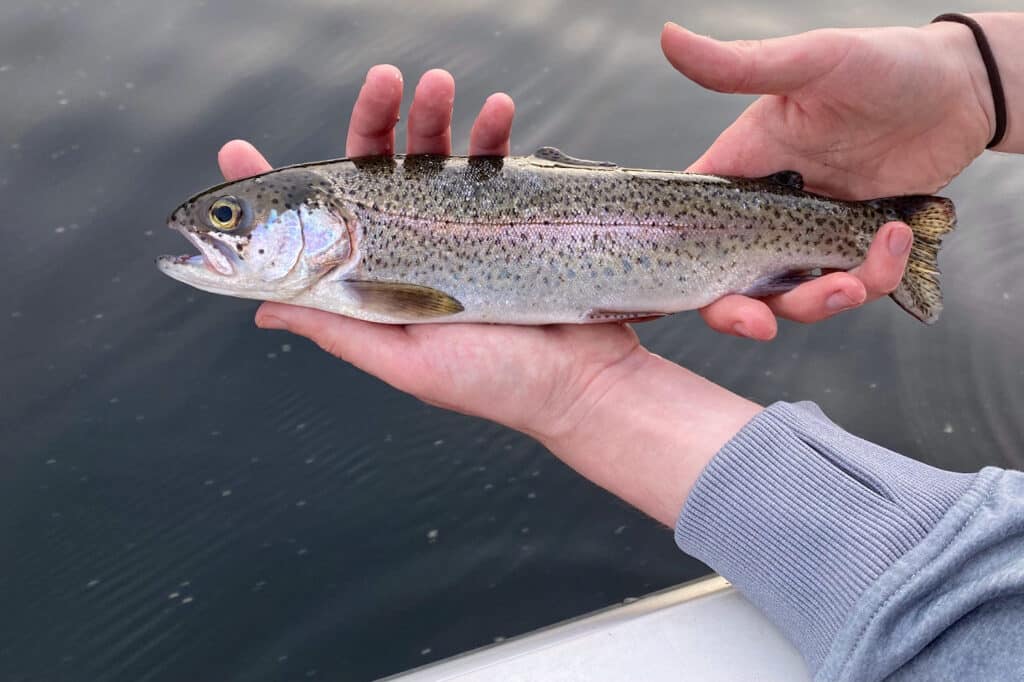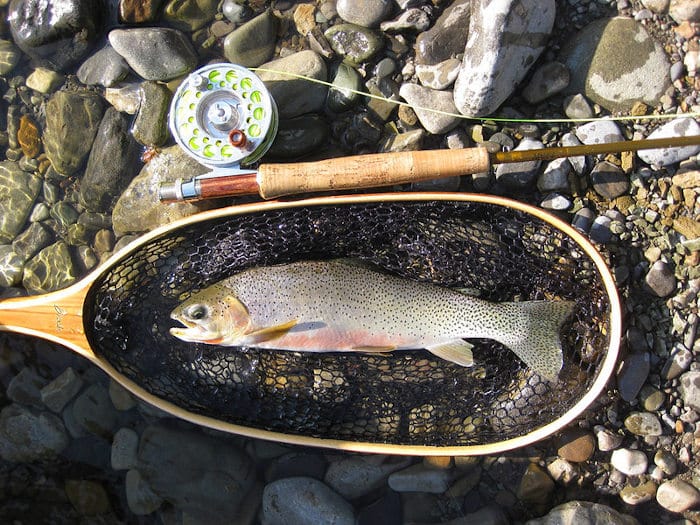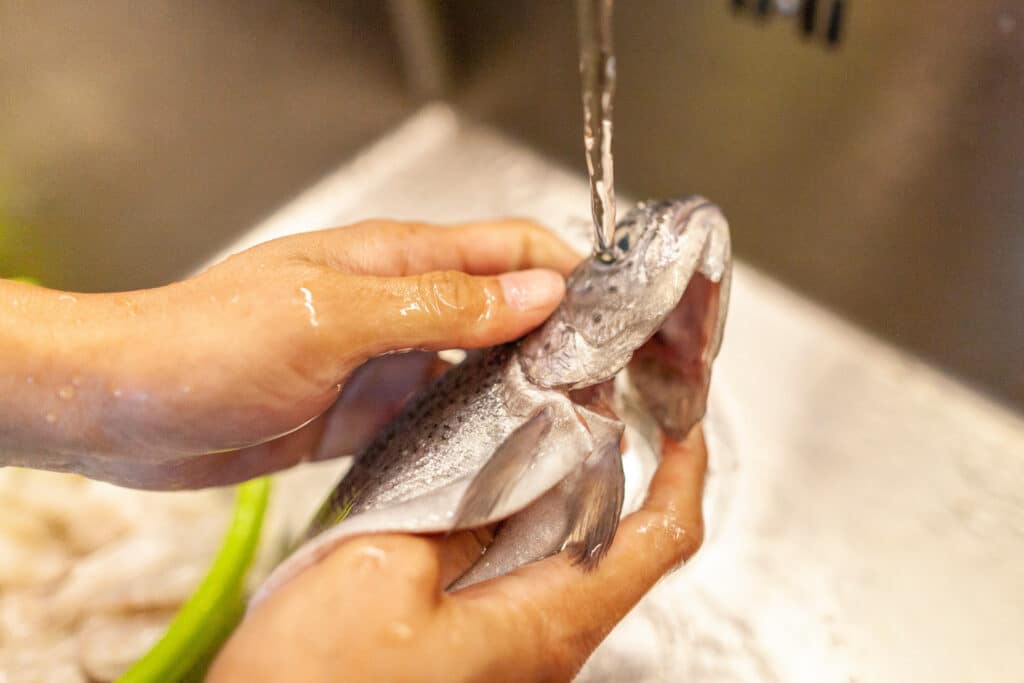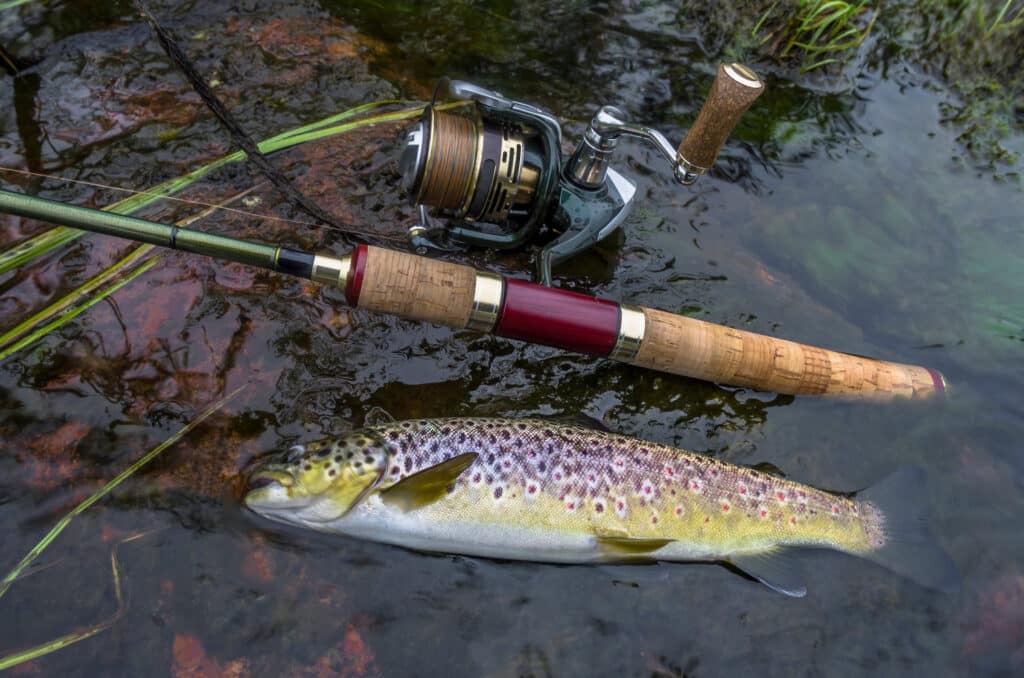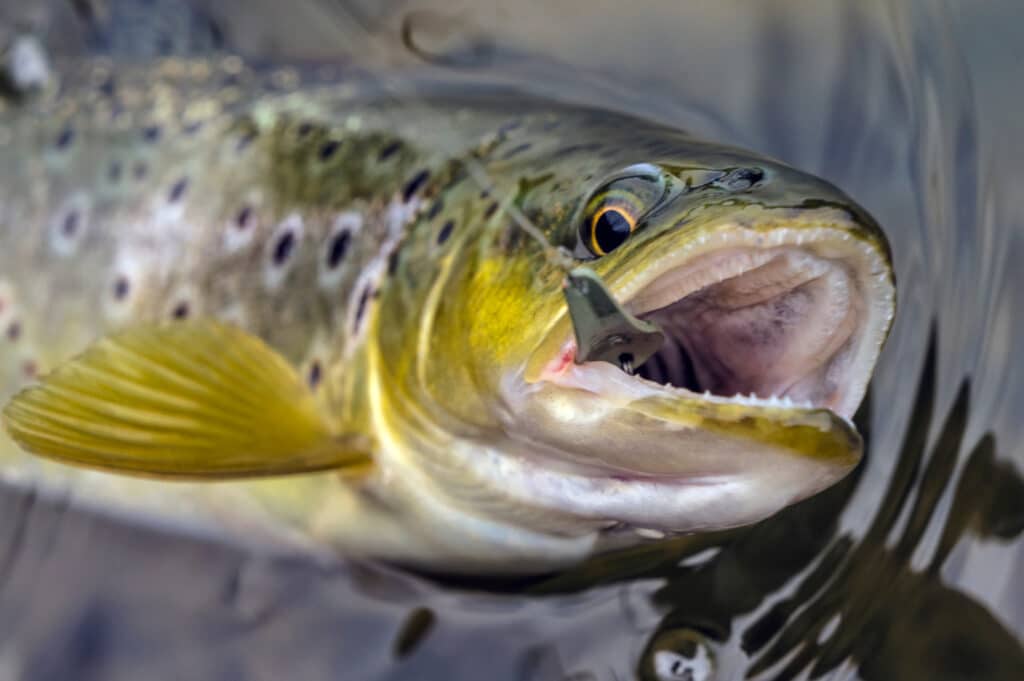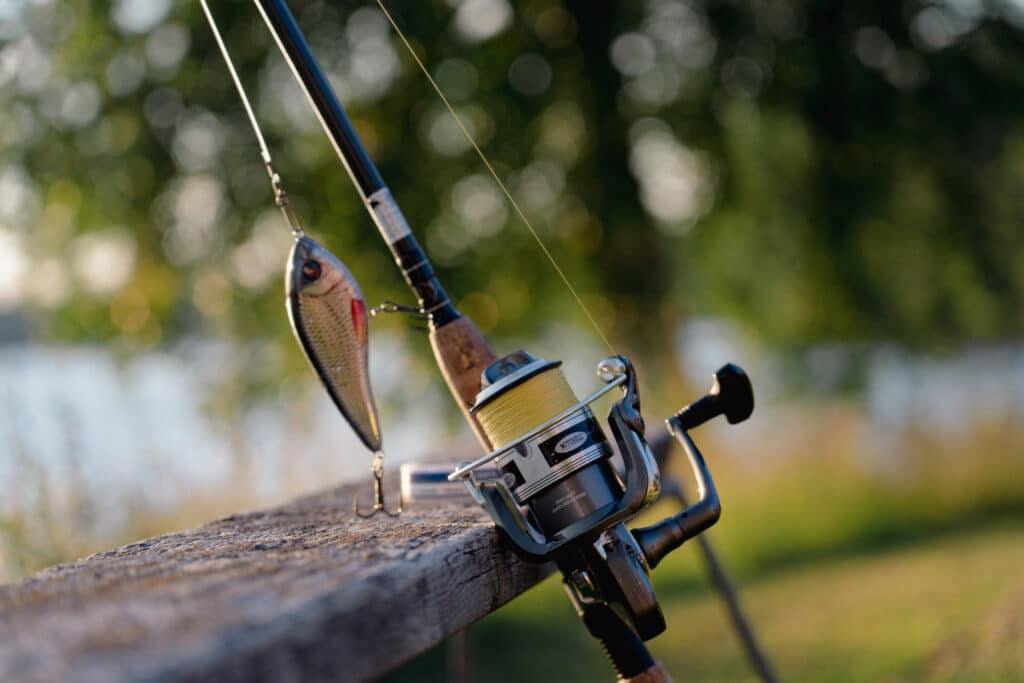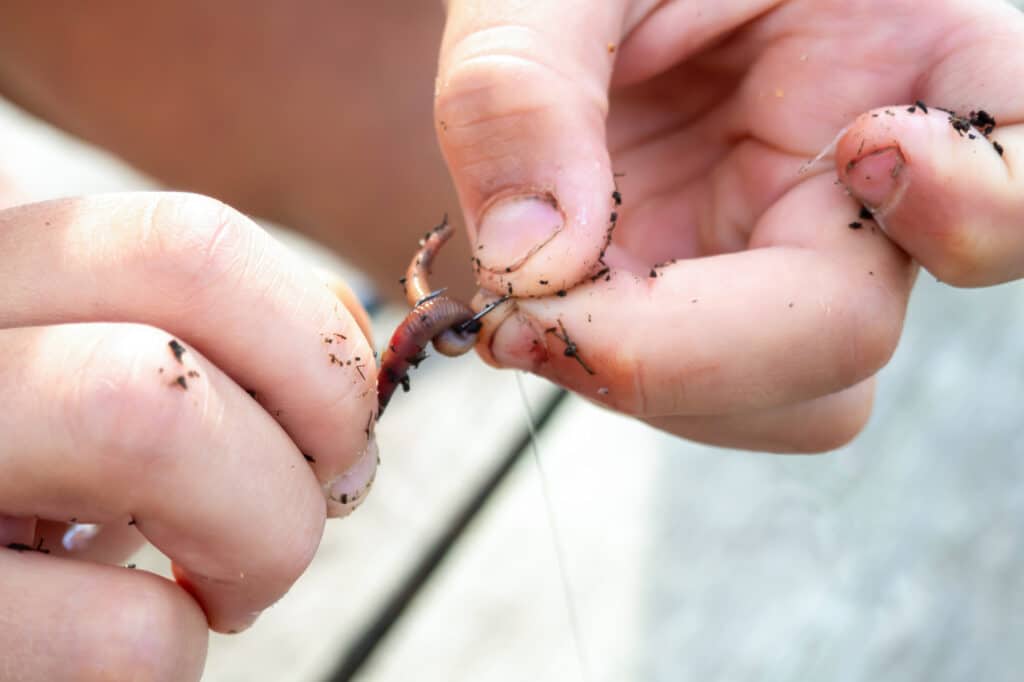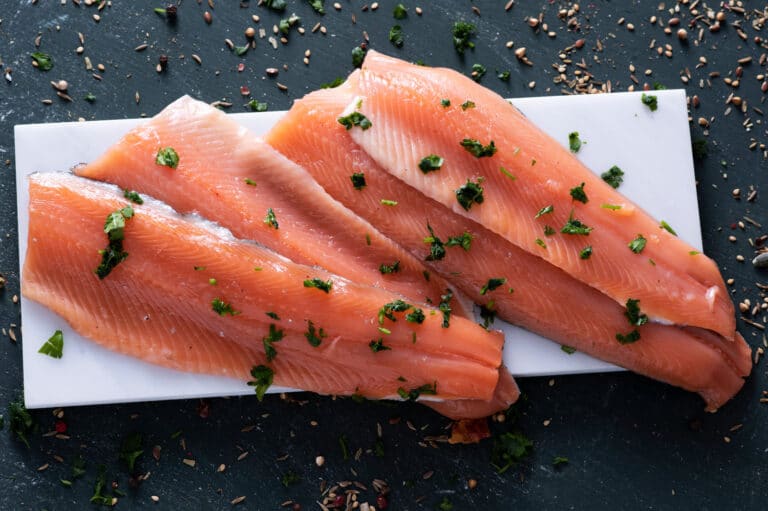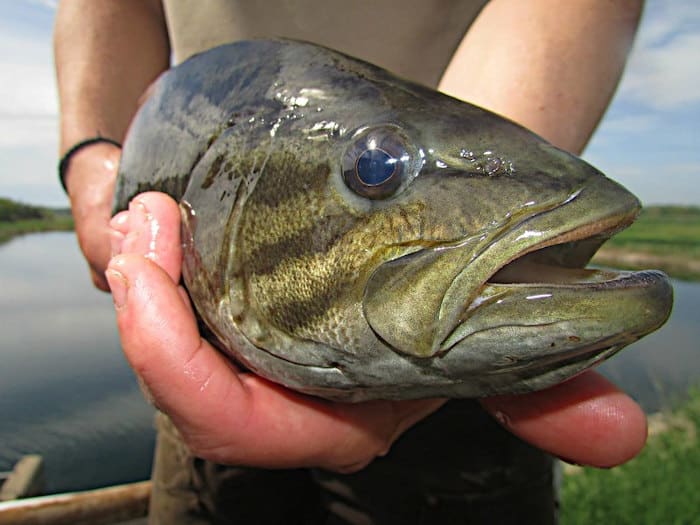There are few other food fish I know of that are as polarizing as the rainbow trout. I’ve heard people say it’s the worst freshwater fish in America, while others absolutely love it. So what does rainbow trout taste like, and why does it inspire both love and hate as food? Read on to find out.
If you came here looking for a quick answer, here it is: wild rainbow trout generally have a mild, almost nutty flavor, with soft but flaky flesh. They aren’t particularly fishy, and can be delicious when prepared correctly. Farmed or stocked trout are a different story; the flavor of those fish all depends on how they were farmed, and some of them can be really, really bad.
The problem with rainbow trout is that there is a ton of variation in how they taste, and that depends on a number of factors. Read on to find out if the rainbows in your local pond or river are tasty or not.
Rainbow Trout Overview
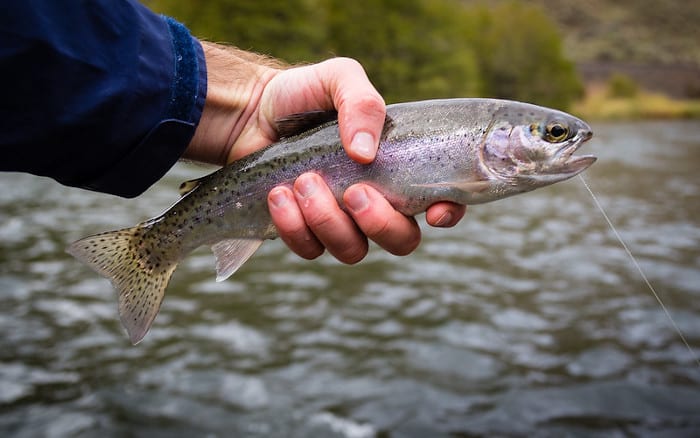
Rainbow Trout (sp. Oncorhynchus mykiss) are the most common trout species found in North America, and one of the most commonly eaten trout in the world. Though they’re native to cold-water tributaries of the Pacific, they’ve been successfully transplanted to water bodies across the continent.
The problem with rainbow trout’s taste is that they’re the most adaptable trout species in North America. Unlike brook trout or cutthroat trout who need cold, clean, flowing water, rainbows can thrive in anything from cold mountain rivers to dirty, warm city ponds.
Their hardiness also makes rainbow trout popular fish species for farming and stocking lakes, which further complicates the problem. The way rainbow trout tastes has everything to do with where they live.
Rainbow Trout Flavor: In An Ideal World
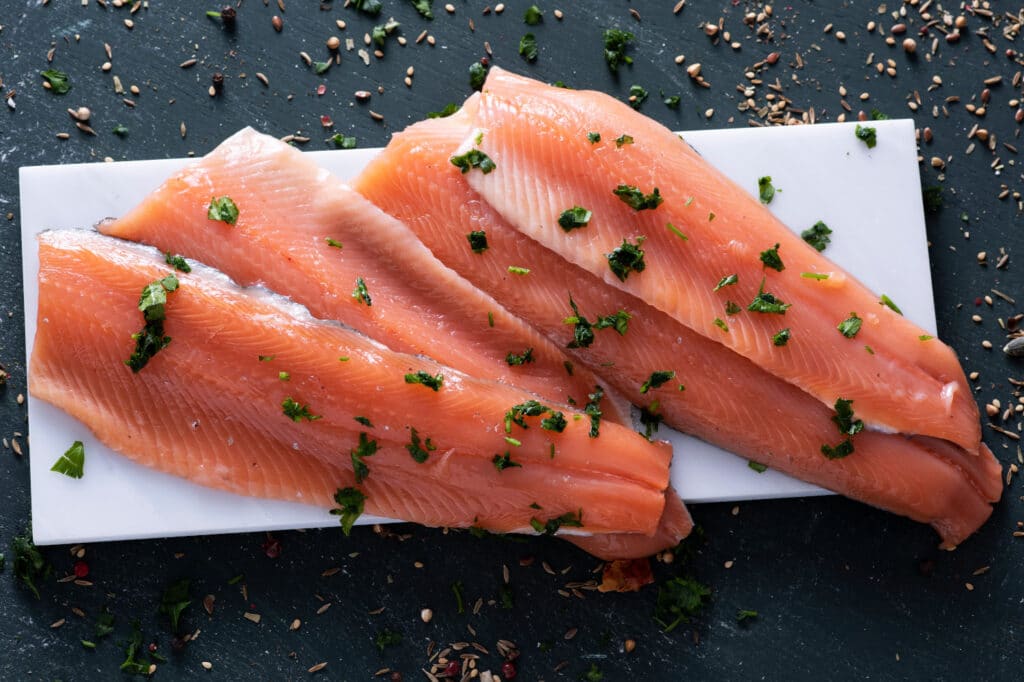
When conditions are perfect, rainbow trout are some of the tastiest, most forgiving freshwater fish you can catch.
That’s because good rainbow trout have a more interesting flavor profile than white fish like perch or walleye, but they aren’t quite as overpowering as other trout species like brown trout or lake trout. In the right conditions, rainbow trout have a very mild, delicate flavor with a little bit of nuttiness. They typically have an attractive light pink or orange color, which can change depending on their main food sources.
It’s not an incredibly oily fish, but it has just enough fat and oil to make it super versatile for cooking. It’s great for pan frying in olive oil or butter, but it’s equally good in chowders, fish cakes, or even smoked. I’ll say it here: good rainbow trout are absolutely delicious.
The issue is that the taste of rainbow trout varies depending on where they were born, how they were raised, and where they live their adult lives. If you’ve ever heard that rainbow trout have an especially “fishy flavor,” it was probably true for the person who told you. But those trout probably came from a less-than-ideal source, and there are plenty of ways to avoid that.
Stocked Vs Wild Vs Farmed Rainbow Trout Flavor
There are plenty of naturally reproducing rainbow trout populations, but many local lakes and ponds get filled annually with stocked trout. They’re easy to catch, but their flavor just doesn’t measure up.
Stocked rainbow trout are raised from eggs in small pens and feed exclusively on fish pellets. These pellets are usually made from ocean fish like herring or menhaden, which are great for protein and nutrients, but not so much for flavor.
Stocked trout pick up the flavor qualities of what they eat, and their sedentary nature in the pens means they aren’t using their muscles as they would in the wild. This results in muddy-tasting, mushy fish. Though they make for easy trout fishing, that kind of fish is less than ideal for the table.
Wild rainbow trout, on the other hand, have to find food to survive. They are constantly on the move, hunting out smaller fish and insects as their primary food sources. Their more diverse diet means fresher, cleaner-tasting fish, and their higher activity levels also make for firmer meat.
I personally love rainbow trout, but if I’m looking to catch a couple for dinner, I’m going to try my hardest to find wild, natural trout. The eating quality of these wild fish is leagues above stocked ones. If you need help catching them, check out our article on how to fish for trout.
It’s worth pointing out here that the flavor of farmed trout (or trout that are destined to actually be sold in fish markets) can be all over the place. It all depends on how much the farmer cares about quality. Some farms are no better than stocking pens, but others try to imitate natural conditions as much as possible. If you’re going to buy farmed trout for dinner, you should take the time to research the farmer and find out how those trout were raised.
Trout Vs Salmon: Similarities And Differences
You may not have tried rainbow trout yet, but chances are you’ve tried salmon. These two fish get compared a lot because really, they’re very similar.
Trout and Salmon are both in the salmon family (called Salmonidae); a family of strong, athletic fish that always spawn in freshwater. But salmon live in the ocean and spawn in coastal rivers, while trout live in fresh water and usually spawn in tributaries (with a couple of exceptions).
This makes a big difference in how they taste. Trout and salmon are both generally fatty fish, but salmon have a much stronger flavor than trout do on average. The saltwater environment provides very different types of food, and the salt itself contributes to a “brinier” flavor than freshwater fish.
Salmon also has a much brighter orange color than rainbow trout (unless that rainbow trout is a steelhead, which lives in the ocean and also has very orange flesh). Wild rainbow trout are usually a light pink color, rarely getting to that bright orange salmon color that we love so much.
A notable exception is the steelhead, which is actually the exact same species as rainbow trout. What makes it a steelhead is that it spends its adult life in the ocean, just like salmon, and it’s flavor is much closer to salmon than freshwater rainbows, too.
Tips For Cooking Rainbow Trout
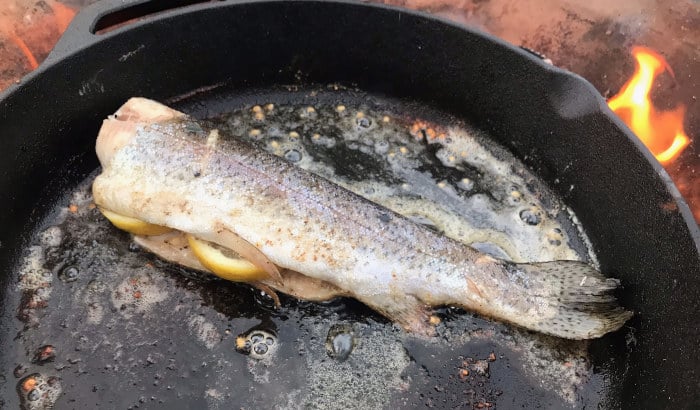
Because trout are an oily, fatty fish, they’re pretty forgiving to cook. You can prepare them in a lot of different ways including baking, pan-frying, poaching, or smoking. They’re hard to overcook, and don’t dry out nearly as easily as leaner white fish.
The key with trout is to not overdo it. My motto when it comes to trout is the simpler the better. I like to use only a few ingredients like lemon slices, garlic, and butter to bring out their natural nutty flavor.
One of my favorite ways to cook rainbow trout is pan-fried whole. The skin gets perfectly crispy, and the meat is still tender and moist.
Pan-frying trout is also super easy. Start by patting the skin dry (dry skin crisps much better). Then spread butter, garlic, and a little salt on the inside, and stuff in two slices of lemon. Pan fry in butter for about 5 minutes on each side, or until the meat flakes with a fork.
This preparation preserves all the delicious natural flavor while enhancing it with a little salt and acidity. It’s a delicious campfire meal and is still my favorite way to cook rainbows.
If you want something unique, though, making some trout sushi or ceviche can be delicious. Check out on my post on how to safely eat trout raw for more details on freshwater sushi.
How To Clean A Rainbow Trout
One of the biggest hangups that people have about eating wild fish is not knowing how to take care of them after the catch. Luckily, trout are some of the easiest fish to clean, and it usually only takes a minute or two.
Steps to cleaning rainbow trout:
- Start by ethically dispatching your trout. A bonk to the top of the head with a heavy object stuns and kills it immediately.
- Insert a sharp knife into the cloaca (aka the butt) and make a shallow cut all the way up to the gills to open up the belly.
- Make a cut just under the jaw the separate the skin from the jawbone.
- With a firm grip, reach through this gap and grab the gills.
- Pull on the gills and the chunk of skin you freed in step 4, pulling towards the tail of the fish.
- This will remove the gills, pectoral fins, and all the guts in one fell swoop. If there are any guts left, gently remove them.
- Use a knife or fingernail to scrape the line of blood (which is actually the kidney) away from the backbone.
- Rinse well with fresh water.
This is the perfect way to clean a trout because it’s quick, effective, and leaves the fish intact. It leaves the head attached, too, which makes it easy to roast over the fire, caveman-style.
Rainbow Trout Taste: Final Thoughts
So do rainbow trout taste good? Despite what some people say, rainbow trout can be some of the most delicious fish out there. The issue with them is that, like anything, rainbow trout are what they eat.
You might want to think twice about eating that rainbow from the city pond that was stocked last week. But if you have access to a cold river with wild populations, catching and eating those rainbow trout will be a fun and delicious experience!
If you’re planning to head out on a food fish mission soon, check out my post on the best fishing line for trout to make sure you have the best shot at success.

